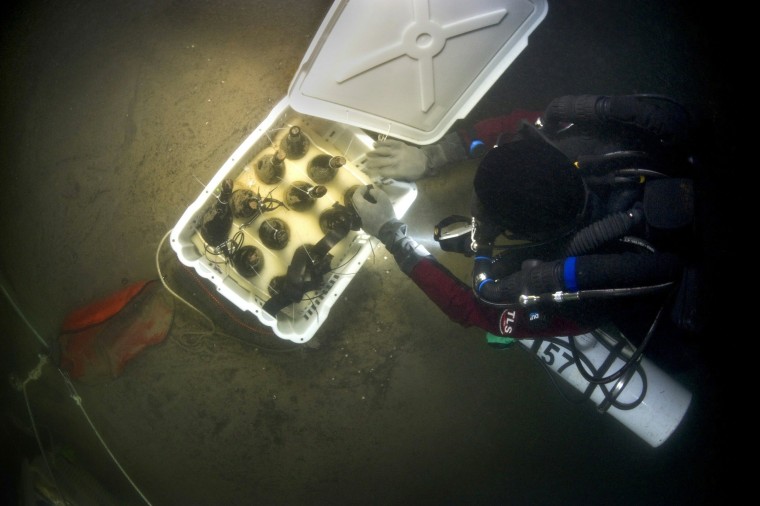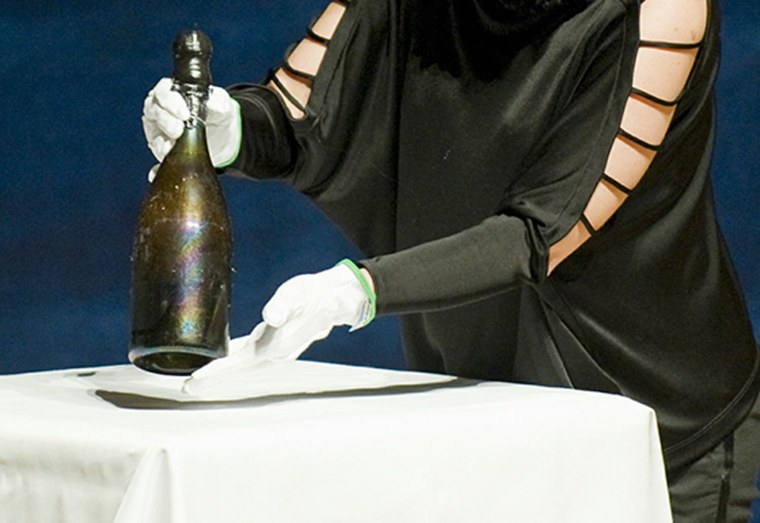In 2010, divers found 168 bottles of bubbly while exploring a shipwreck off the Finnish Aland archipelago in the Baltic Sea. When they tasted the wine, they realized it was likely more than a century old. A chemical analysis of the ancient libation has revealed a great deal about how this 19th-century wine was produced.
"After 170 years of deep-sea aging in close-to-perfect conditions, these sleeping Champagne bottles awoke to tell us a chapter of the story of winemaking," the researchers wrote in the study, published today (April 20) in the journal Proceedings of the National Academy of Sciences.

Engravings the cork suggest it was produced by the French Champagne houses Veuve Clicquot Ponsardin, Heidsieck, and Juglar, the researchers said. The 170-year-old beverage had a sugar content of about 20 ounces per gallon, whereas today's Champagnes have only about 0.8 ounces to 1 oz/gal. This high sugar content was characteristic of people's tastes at the time, the researchers said. In addition, the Champagne contained higher concentrations of certain minerals — including iron, copper and table salt (sodium chloride) — than modern wines.
The chemical composition closely matched the descriptions of wine-tasting experts, who described the aged Champagne as "grilled, spicy, smoky and leathery, together with fruity and floral notes." The researchers were amazed by how well the wine had aged under the sea.
The wine was found at a depth of more than 160 feet, where it's dark and exposed to a constant, low temperature — which, according to lead study author Philippe Jeandet, of the University of Reims, is "perfect slow-aging conditions for good evolution of wine."
—Tanya Lewis, Live Science
This is a condensed version of a report from Live Science. Read the full report. Follow Tanya Lewis on Twitter. Follow us @livescience, Facebook & Google+.
